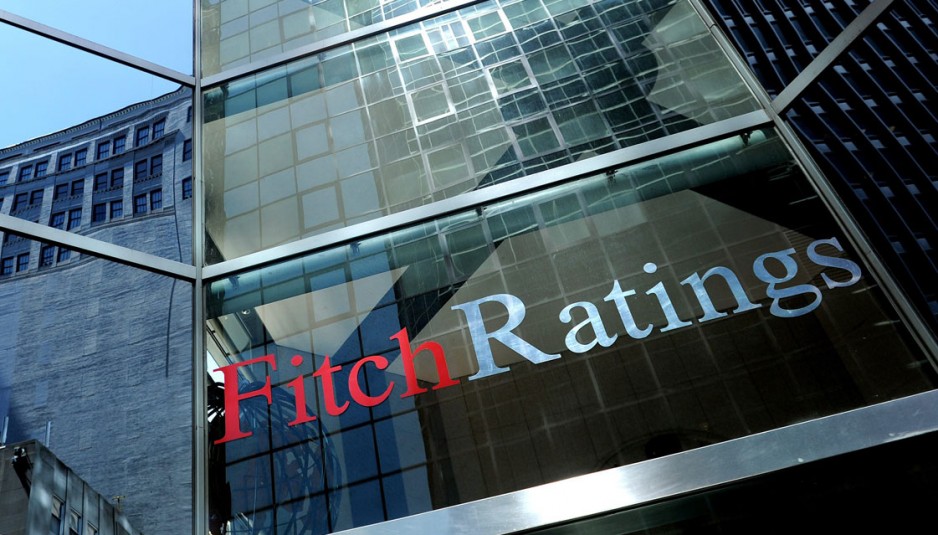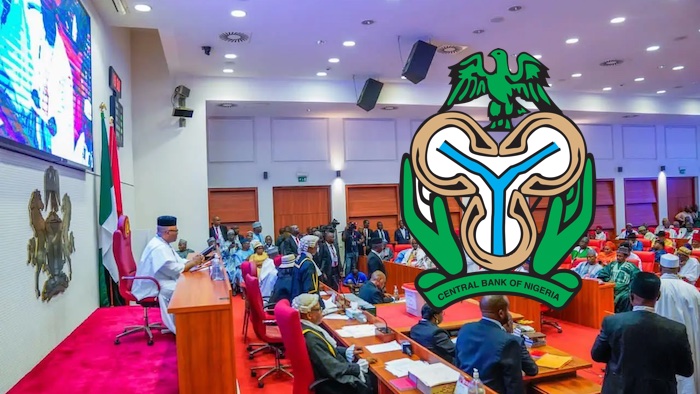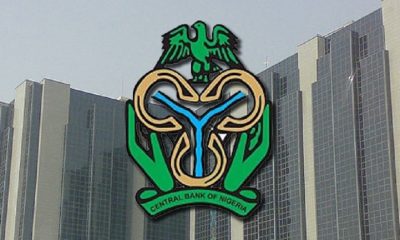Banking
Nigerian Banks to Still Struggle in 2017—Fitch


By Dipo Olowookere
Fitch Ratings says Nigerian banks will continue to face challenges this year, following an extremely difficult 2016.
Banks faced multiple threats from the operating environment in 2016, including Nigeria sliding into recession, the economy continuing to suffer from low oil prices and severe shortages of foreign currency (FC).
Consequently banks struggled with declining operating profitability (excluding translation gains), sluggish credit growth, fast asset quality deterioration, tight FC liquidity and weakening capitalisation, putting increasing pressure on their credit profiles.
Fitch, in its latest report, stated that outlook for the rest of 2017 is not much brighter, stressing that it believes that the banks will continue to face extremely tight FC liquidity despite the authorities’ best efforts to normalise the foreign-exchange (FX) interbank market and improve the supply of US dollars.
“Importantly, deliveries under the Central Bank of Nigeria’s (CBN) FX forward transactions since 1H16 have helped the banks access US dollars and reduce a large backlog of overdue trade finance obligations to international correspondent banks.
However, given the severity of the FC liquidity issues, refinancing risk remains at the top of our perceived risks for the sector, especially as some banks have large Eurobond maturities in 2017/2018,” the rating agency said.
It noted that fast asset quality deterioration is in line with its expectations given the macro challenges and the continuing issues in the oil-sector.
It added that oil-related impaired loans (NPLs) are high and this excludes large volumes of restructured loans.
Other industry sectors contributing to NPLs include general commerce and trading, which have been affected by both the naira depreciation and FC shortages.
For the Fitch-rated banks, “We believe the NPL ratio could rise to 10%-12% by end-1H17 (this remains lower than the CBN’s reported figure for the entire sector). As a one-off policy change, the CBN allowed banks to write off all fully reserved NPLs by end-2016.
“Together with significant loan restructuring (particularly in the oil sector), this will ease pressure on NPLs for now, in our view.”
Fitch further said slower economic growth and a lower risk appetite from banks will continue to translate into subdued credit growth and weak core earnings generation in 2017. Loan growth averaged 25% in 9M16, but this was due to the currency translation effect post devaluation as about half of sector loans are in FC. Loan growth was negligible in constant currency terms.
The banks’ 2016 profitability was underpinned by large translation gains booked on net long FC positions following the naira devaluation. Excluding these, some banks would have reported a significant fall in operating income.
Regulatory capital ratios are high from a global perspective, but remain under pressure due to inflated risk-weighted assets (due to the FC translation effect) and lower core retained earnings.
The agency said in its view, there is a limited margin of safety as some banks could very easily breach minimum regulatory requirements in the event of further naira depreciation and/or weaker asset quality.
It said the Long-Term IDRs of all banks’ are in the ‘B’ range, indicating highly speculative fundamental credit quality. The low ratings reflect the significant influence of the weak operating environment, which overshadows other rating factors. The banks’ IDRs are driven by their Viability Ratings, Fitch’s assessment of their standalone creditworthiness.
The agency pointed out that following a reassessment of potential sovereign support available to the banks in 2016, it believes that sovereign support cannot be relied on given Nigeria’s (B+/Negative) weak ability to do so in FC.
“As a consequence, we removed sovereign support from the Long-Term IDRs,” it said.
Concluding, Fitch said overall, the largest Nigerian banks with stronger and more diverse business models, high revenue-generating capacity and stronger liquidity profiles appear to be coping better than smaller banks on most metrics. However, tail risks remain high for all banks due to their sensitivity to concentration risk.
Banking
Senate Seeks CBN’s Full Disclosure on Unremitted N1.44trn Surplus

By Adedapo Adesanya
The Senate has demanded detailed explanation from the Central Bank of Nigeria (CBN) over the alleged non-remittance of N1.44 trillion in operating surplus.
The Senate Committee on Banking, Insurance and Other Financial Institutions, chaired by Mr Tokunbo Abiru, opened its statutory briefing with a firm call for transparency at the apex bank, noting that the Auditor-General’s query on the unremitted funds required a full, clear and documented response, insisting that public trust in monetary governance depended on strict accountability.
While acknowledging the CBN’s achievements in stabilising the foreign exchange market and reducing inflation, Mr Abiru underscored that such progress must be accompanied by institutional responsibility.
He stated the Senate expected the CBN to explain the circumstances surrounding the query, outline corrective steps taken and reveal safeguards against future lapses.
This came as the Governor of the central bank, Mr Yemi Cardoso, appeared before the senate committee and offered an extensive review of economic conditions, asserting that Nigeria was experiencing renewed macroeconomic stability across major indicators.
Mr Cardoso attributed the progress to bold monetary reforms, foreign-exchange liberalisation and disciplined liquidity management implemented since mid-2025.
According to him, headline inflation had declined for seven consecutive months, from 34.6 per cent in November 2024 to 16.05 per cent in October 2025, marking the steepest and longest disinflation trend in over a decade.
Food inflation accruing to him also slowed to 13.12 per cent, supported by improved supply conditions and exchange-rate predictability.
The CBN governor described the foreign-exchange market as fundamentally transformed, adding that speculative attacks and arbitrage opportunities had largely disappeared.
According to him, the premium between the official and parallel markets had fallen to below two per cent, compared to over 60 per cent a year earlier. As of November 26, the naira traded at N1,442.92 per dollar at the Nigerian Foreign Exchange Market, stronger than the N1,551 average recorded in the first half of 2025.
He also announced a sharp rise in external reserves to $46.7 billion, the highest in nearly seven years and sufficient to cover over ten months of imports.
Diaspora remittances, he noted, had tripled to about $600 million monthly, while foreign capital inflows reached $20.98 billion in the first ten months of 2025, 70 per cent higher than in 2024 and more than four times the 2023 figure.
Cardoso further confirmed that the CBN had fully cleared the $7 billion verified FX backlog, restoring investor confidence and strengthening Nigeria’s balance-of-payments position.
On banking-sector stability, he reported that recapitalisation efforts were progressing smoothly. Twenty-seven banks had already raised new capital, with sixteen meeting or surpassing the new regulatory thresholds ahead of the March 31, 2026 deadline, highlighting improvements in ATM cash availability, digital-payments oversight and cybersecurity compliance.
Despite the positive indicators, the Senate sought clarity on several policy decisions.
Mr Abiru pressed for explanations on the sustained 45 per cent Cash Reserve Ratio (CRR), the 75 per cent CRR applied to non-Treasury Single Account public-sector deposits, FX forward settlements, mutilated naira notes in circulation, excessive bank charges, failed electronic transactions and the compliance of CBN subsidiaries with parliamentary oversight.
He also requested an update on the activities of the Financial Services Regulatory Coordinating Committee, arguing that stronger inter-agency cooperation was necessary to maintain public confidence.
The session later moved into a closed-door meeting.
Banking
Toxic Bank Assets: AMCON Repays CBN N3.6trn, Still Owes N3trn

By Modupe Gbadeyanka
About N3.6 trillion has been repaid to the Central Bank of Nigeria (CBN) by the Asset Management Corporation of Nigeria (AMCON) since its inception in 2010.
This information was revealed by the chief executive of AMCON, Mr Gbenga Alade, during a media parley to update the press on the activities of the agency.
Mr Alade said at the moment, the organisation still owes the central bank about N3 trillion for toxic assets of banks in the country.
He praised the organisation for its asset recovery drive, stressing that when compared with others across the world, Nigeria has done well.
“It is important to stress that the corporation has done tremendously well, especially when compared to other notable government-owned Asset Management Corporations around the world.
“Based on the balance at purchase, AMCON outperformed other Asset Management Corporations all over the world by achieving over 87 per cent in recoveries despite the unique challenges associated with debt recovery in Nigeria.
“The Malaysian Danaharta, which is adjudged one of the best performing Asset Management Corporation’s, only achieved 58 per cent. The Chinese Asset Management Corporation, despite its stricter laws, achieved just 33 per cent.
“Only the Korean Asset Management Corporation (KAMCO), South Korea, has achieved more recoveries than AMCON, with about 100 per cent. This was due to their brute force with which they chased the obligors.
“Despite KAMCO’s recovery records, the agency is still operational to date with slight realignments in its mandate.
“Other noted Asset Management Corporations that have transitioned into a perpetual institution of the various governments include, China Asset Management Company, Federal Deposit Insurance Corporation (FDIC) USA, and KFW Germany.
“So, gentlemen, without sounding immodest, AMCON has done well, and we will not relent until all the outstanding debts are fully realized,” Mr Alade stated.
On the financial performance of AMCON, he said last year, the firm posted a revenue of N156.25 billion and operating expenses of N29.04 billion, while for the 2025 fiscal year should be a revenue of N215.15 billion and operating expenses of N29.06 billion.
Banking
The Alternative Bank Opens Effurun Branch in Delta

By Modupe Gbadeyanka
One of the non-interest banks in Nigeria, The Alternative Bank (AltBank), has opened a new branch in Effurun, Delta State.
The new office will serve the Edo-Delta region and provide purposeful banking and real financial empowerment for individuals, entrepreneurs, and businesses, a statement from the firm stated.
The lender disclosed that the Effurun branch is a bold move in its mission to reshape banking in Nigeria.
The launch was graced by key dignitaries, including the Ovie of Uvwie Kingdom, Emmanuel Ekemejewa Sideso Abe I; the Chairman of Uvwie Local Government, Anthony O. Ofoni, represented his vice, Andrew Agagbo; and the Special Adviser to the Governor of Delta State on Community Development, Mr Ernest Airoboyi; amongst others.
The Divisional Head for South at The Alternative Bank, Mr Chukwuemeka Agada, emphasised the institution’s commitment to Warri and its surrounding communities.
“By establishing a presence here, we are initiating a transformation in the way banking serves the people of Delta. Our purpose-driven approach ensures that customers’ financial goals are not just met but exceeded,” he stated.
“This branch represents our pledge to empower Warri’s dynamic businesses and families, providing them with the tools to grow without compromise,” Mr Agada added.
“We understand the heartbeat of this community, and we are excited to integrate our bank into the fabric of this dynamic region,” he stated further.
On his part, the representative of the Ovie, Mr Samuel Eshenake, challenged the bank to facilitate development and employment within the Effurun community.
The Regional Head for Edo/Delta at The Alternative Bank, Mr Akanni Owolabi, embraced this challenge, pledging that the bank will work sustainably to drive local commerce.
“At The Alternative Bank, we are committed to being an active partner in the development of Effurun. We see this branch as a catalyst for creating opportunities, driving employment, and supporting the growth of local businesses.
“Our mission is to empower this community, ensuring that every step forward is one of progress, prosperity, and shared success.”
-

 Feature/OPED6 years ago
Feature/OPED6 years agoDavos was Different this year
-
Travel/Tourism9 years ago
Lagos Seals Western Lodge Hotel In Ikorodu
-

 Showbiz3 years ago
Showbiz3 years agoEstranged Lover Releases Videos of Empress Njamah Bathing
-

 Banking7 years ago
Banking7 years agoSort Codes of GTBank Branches in Nigeria
-

 Economy3 years ago
Economy3 years agoSubsidy Removal: CNG at N130 Per Litre Cheaper Than Petrol—IPMAN
-

 Banking3 years ago
Banking3 years agoFirst Bank Announces Planned Downtime
-

 Banking3 years ago
Banking3 years agoSort Codes of UBA Branches in Nigeria
-

 Sports3 years ago
Sports3 years agoHighest Paid Nigerian Footballer – How Much Do Nigerian Footballers Earn






















